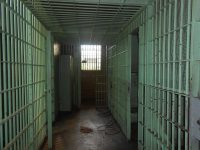How Are Prison Inmates Classified?

Andrew Peter Garforth, a current inmate at Goulburn prison has recently made headlines after it was announced that his security classification had been downgraded.
Garforth was convicted in 1992 of the sexual assault and murder of a nine year old girl, Ebony Simpson.
Ebony was on her way home from school when she was abducted, assaulted, killed and disposed of in a dam. Garforth was sentenced to life imprisonment.
Her mother was devastated by the news of Garforth’s reclassification, saying it was the realisation of a fear that had haunted her for the last 22 years. She said “I have to think about it every day and so should he. I got a life sentence and so did he.”
Up until recently, Garforth had a Category A2 classification, but this has been downgraded to Category B. He remains in maximum security at Goulburn prison.
But what do these categories mean, and how does the prison classification system work?
A spokesperson from NSW Corrective Services said that Garforth’s reclassification will not change much, except for allowing him to participate in offender programs and employment in prison.
Classification of inmates
After a person has been convicted and sentenced to imprisonment, one of the first things that will happen is the determination of their security classification. After this, a decision will be made as to where the inmate will serve their sentence.
There are seven categories for males, starting from ‘Category AA’ – the highest security classification, down to ‘Category C3’:
1. Category AA;
2. Category A1;
3. Category A2;
4. Category B;
5. Category C1;
6. Category C2;
7. Category C3
A person classified as ‘Category AA’ is someone deemed to represent a special risk to good order and security, and should be confined at all times by physical barriers including towers, and subjected to surveillance monitoring equipment.
At the other end of the scale is ‘Category C3’, which is for inmates who present a low risk, do not need to be confined by physical barriers or be supervised.
A similar classification system exists for females, in respect of whom the categories are:
1. Category 5;
2. Category 4;
3. Category 3;
4. Category 2;
5. Category 1
‘Category 5’ are inmates that represent a special risk to national security.
They are to be confined at all times to special facilities with a secure physical barrier that includes towers, and subjected to electronic surveillance equipment.
At the other end of the scale is ‘Category 1’, which are inmates that do not need to be confined by physical barriers at all times.
Inmates (male or female) who have committed an offence of escape may be classified as either:
1. Category E1; and
2. Category E2
‘Category E1’ inmates are deemed to represent a higher risk to security than those classified as E2.
Under regulation 11 of the Crimes (Administration of Sentences) Regulation 2014, an inmate’s classification must be reviewed at least every 12 months, or as often as the Commissioner determines.
What is the Serious Offenders Review Council?
The Serious Offenders Review Council manages security classification, placement and case management of inmates who are classified as serious offenders. Serious offenders make up about 7% of the NSW prison population.
They include inmates who have been convicted of murder and/or are serving life imprisonment, or serving at least 12 years in custody, or deemed to require management as a serious offender by the sentencing Court, Parole Authority or Commissioner.
The Council also provide reports to the State Parole Authority, Supreme Court, Attorney General and Minister for Corrections.
It can downgrade the security classification of inmates if it recognises the potential for rehabilitation.
The outcome for Garforth
Unfortunately for Garforth, the public outcry at his reclassification has led Corrective Services Minister David Elliott to jump in and reverse the decision.
Mr Elliott said that he was so angered by the Council’s decision that he considered stripping away more of Garforth’s privileges than he enjoyed before the downgrade.






